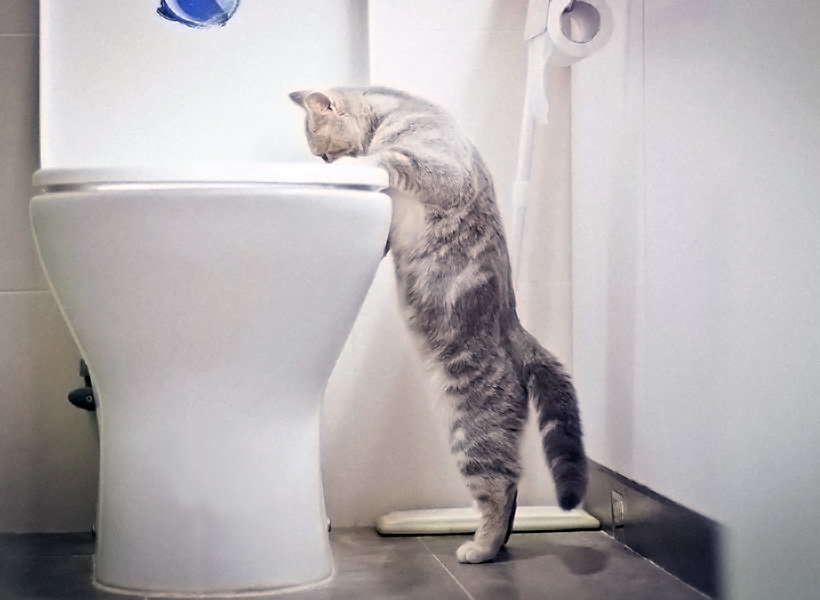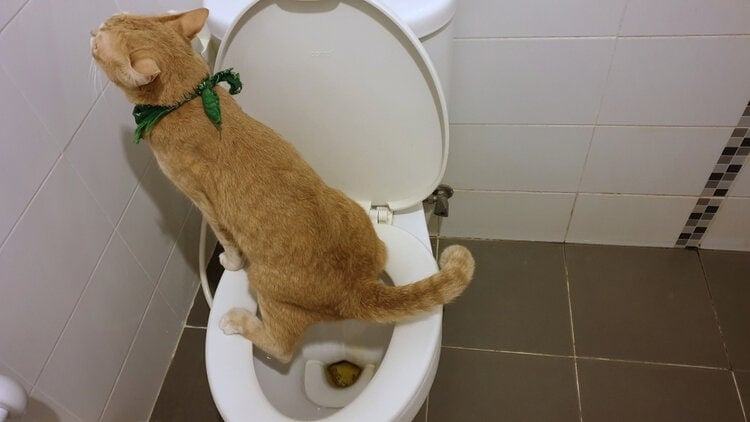Exploring Why Animal Waste Needs to Not Be Flushed Down the Toilet
Exploring Why Animal Waste Needs to Not Be Flushed Down the Toilet
Blog Article
In this article below you will discover a lot of brilliant ideas concerning Don't Flush Your Pets Poo Down The Loo, Vet Warns.

When it involves disposing of waste, specifically animal waste, many people often resort to the hassle-free alternative of flushing it down the commode. Nonetheless, this relatively easy option can have serious effects for the setting and public health. In this article, we'll check out why flushing pet waste down the bathroom is a poor concept and give alternative techniques for appropriate disposal.
Introduction
Appropriate waste disposal is crucial for maintaining environmental sustainability and public health. While it might seem harmless to flush animal waste down the toilet, it can bring about numerous issues, both for the atmosphere and human wellness.
Risks of flushing animal waste
Ecological influence
Flushing animal waste introduces dangerous bacteria and pathogens into waterways, which can negatively influence marine environments. These microorganisms can pollute water resources and harm marine life, disrupting fragile ecological communities.
Public health concerns
Animal waste includes harmful bacteria such as E. coli and Salmonella, which can pose major wellness threats to human beings. Flushing animal waste down the toilet can pollute water supplies, resulting in the spread of diseases and infections.
Alternatives to flushing
Rather than purging pet waste down the commode, there are numerous alternate disposal techniques that are a lot more eco-friendly and hygienic.
Composting
Composting animal waste is an environmentally friendly way to get rid of it. By composting, raw material is broken down into nutrient-rich soil, which can be used to fertilize gardens and plants.
Landfill disposal
Taking care of animal waste in a landfill is one more choice. While not as environmentally friendly as composting, it is a more secure alternative to flushing, as it protects against the contamination of water resources.
Pet garbage disposal systems
There are specific animal garbage disposal systems available that securely and hygienically get rid of pet waste. These systems typically make use of enzymes to break down waste and eliminate odors.
Actions to correct animal waste disposal
To make sure correct disposal of pet waste, adhere to these steps:
Scooping and nabbing waste
Consistently scoop and bag animal waste utilizing eco-friendly bags. This protects against waste from infecting the setting.
Utilizing marked waste containers
Dispose of bagged pet waste in marked waste bins, such as compost bins or landfill containers. Stay clear of flushing it down the bathroom in all prices.
Cleaning up can and pet locations frequently
Routinely tidy can and pet locations to prevent the build-up of waste and microorganisms. Use pet-safe cleaning items to keep hygiene.
Benefits of appropriate disposal approaches
Adopting proper disposal techniques for animal waste provides numerous benefits:
Minimized environmental pollution
Appropriate disposal methods decrease the danger of environmental pollution, safeguarding rivers and environments from contamination
Minimized risk of water contamination.
By avoiding flushing pet waste down the commode, the danger of water contamination is significantly lowered, guarding public health.
Enhanced sanitation and health
Proper disposal methods promote better sanitation and health, developing a more secure setting for both human beings and pets.
Final thought
To conclude, flushing pet waste down the commode is dangerous to the atmosphere and public health. By embracing alternate click here disposal methods and following correct waste administration practices, we can decrease the unfavorable influence of animal waste and contribute to a cleaner, healthier world.
What To Do With Dog Poo – The Do's And Don'ts Of Disposing Of Faeces
Dog poo bins
Some councils provide dedicated dog waste bins in popular dog-walking areas that can take dog poo that has been bagged but you can legally dispose of dog waste in any public litter bin, as long as it is securely bagged. This also applies to your wheelie bin at home.
Do not flush
Water companies do not recommend flushing dog faeces down the toilet because certain parasites can survive the water processing treatment and are potentially harmful to humans. You should also never consider flushing dog poo that has been bagged down the toilet as the bags will not break down and instead create severe blockages in the sewage system.
In the woods
The Forestry Commission promotes a ‘stick and flick’ method for dealing with waste in the woods. This means finding a stick and using it to flick any poo from off the path so that it is out of the way of other walkers. You could also bury it as long as it is not in an area where there might be livestock.
Livestock
Parasites found in dog poo can be transmitted to livestock if they inadvertently eat infected faeces that has been left on grazing land. This could result in the death of sheep or abortion in cattle so you should always make sure you pick up your dog’s waste in fields where livestock could be present.

Routinely tidy can and pet locations to prevent the build-up of waste and microorganisms. Use pet-safe cleaning items to keep hygiene.
Benefits of appropriate disposal approaches
Adopting proper disposal techniques for animal waste provides numerous benefits:
Minimized environmental pollution
Appropriate disposal methods decrease the danger of environmental pollution, safeguarding rivers and environments from contamination
Minimized risk of water contamination.
By avoiding flushing pet waste down the commode, the danger of water contamination is significantly lowered, guarding public health.
Enhanced sanitation and health
Proper disposal methods promote better sanitation and health, developing a more secure setting for both human beings and pets.
Final thought
To conclude, flushing pet waste down the commode is dangerous to the atmosphere and public health. By embracing alternate click here disposal methods and following correct waste administration practices, we can decrease the unfavorable influence of animal waste and contribute to a cleaner, healthier world.
What To Do With Dog Poo – The Do's And Don'ts Of Disposing Of Faeces
Dog poo bins
Some councils provide dedicated dog waste bins in popular dog-walking areas that can take dog poo that has been bagged but you can legally dispose of dog waste in any public litter bin, as long as it is securely bagged. This also applies to your wheelie bin at home.
Do not flush
Water companies do not recommend flushing dog faeces down the toilet because certain parasites can survive the water processing treatment and are potentially harmful to humans. You should also never consider flushing dog poo that has been bagged down the toilet as the bags will not break down and instead create severe blockages in the sewage system.
In the woods
The Forestry Commission promotes a ‘stick and flick’ method for dealing with waste in the woods. This means finding a stick and using it to flick any poo from off the path so that it is out of the way of other walkers. You could also bury it as long as it is not in an area where there might be livestock.
Livestock
Parasites found in dog poo can be transmitted to livestock if they inadvertently eat infected faeces that has been left on grazing land. This could result in the death of sheep or abortion in cattle so you should always make sure you pick up your dog’s waste in fields where livestock could be present.

I am just very excited about Don't Flush Your Pets Poo Down The Loo, Vet Warns and I really hope you enjoyed our article. If you appreciated our page please be sure to share it. Thank you for being here. Revisit us soon.
Click Here Report this page